Terra Australis
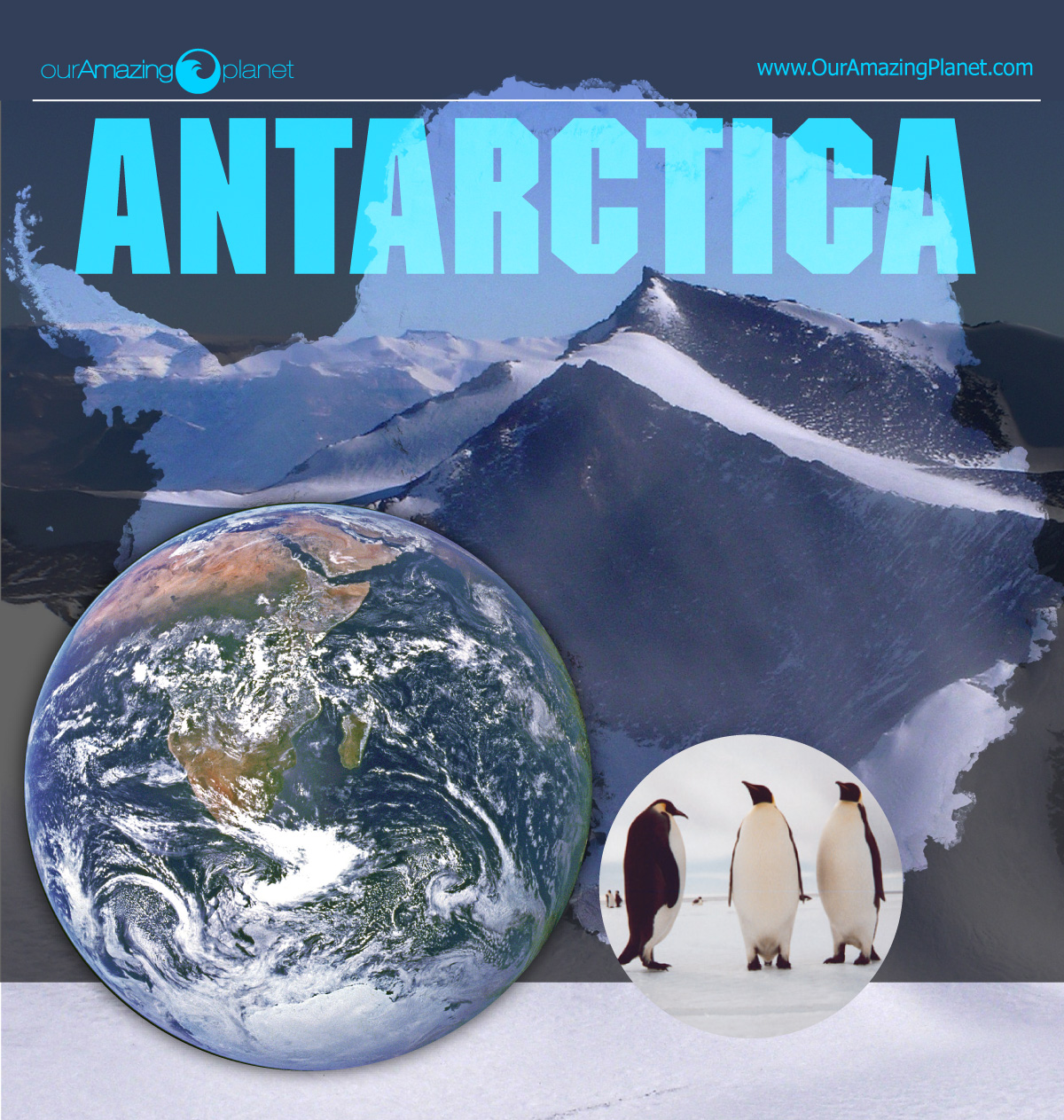
For at least 2,000 years philosophers believed that the spherical Earth must have a large unknown continent at the bottom of the globe to provide symmetry with the large continents to the north. On maps this huge continent was called "Terra Australis" or Southern Land. Europeans finally sighted the ice of Antarctica in the 18th century. Dec. 14, 2011, is the 100th anniversary of the first expedition to reach the South Pole, led by Roald Amundsen.
In the next section, we will see how Antarctica fits into the context of the southernmost part of Earth.
Continental Extremes
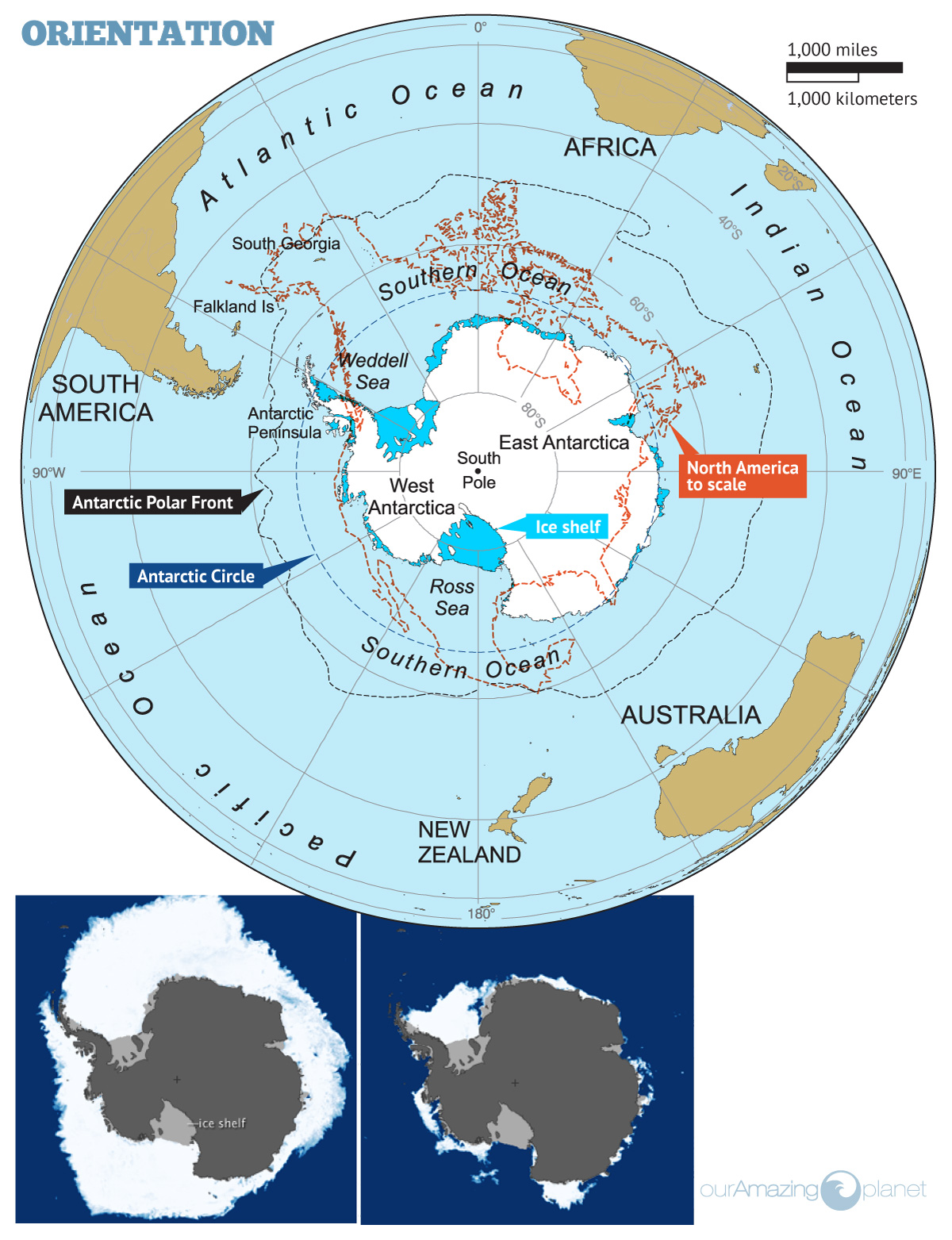
Antarctica has the highest elevation and coldest average temperature of all the continents. With an area of 5.4-million-square miles (14-million-square kilometers), Antarctica covers slightly less than 1.5 times the area of the United States.
Sea ice is frozen salt water. The area of sea ice varies considerably throughout the year. The ice maximum is in September during southern winter. The minimum is in February.
Fresh Frozen Reservoir
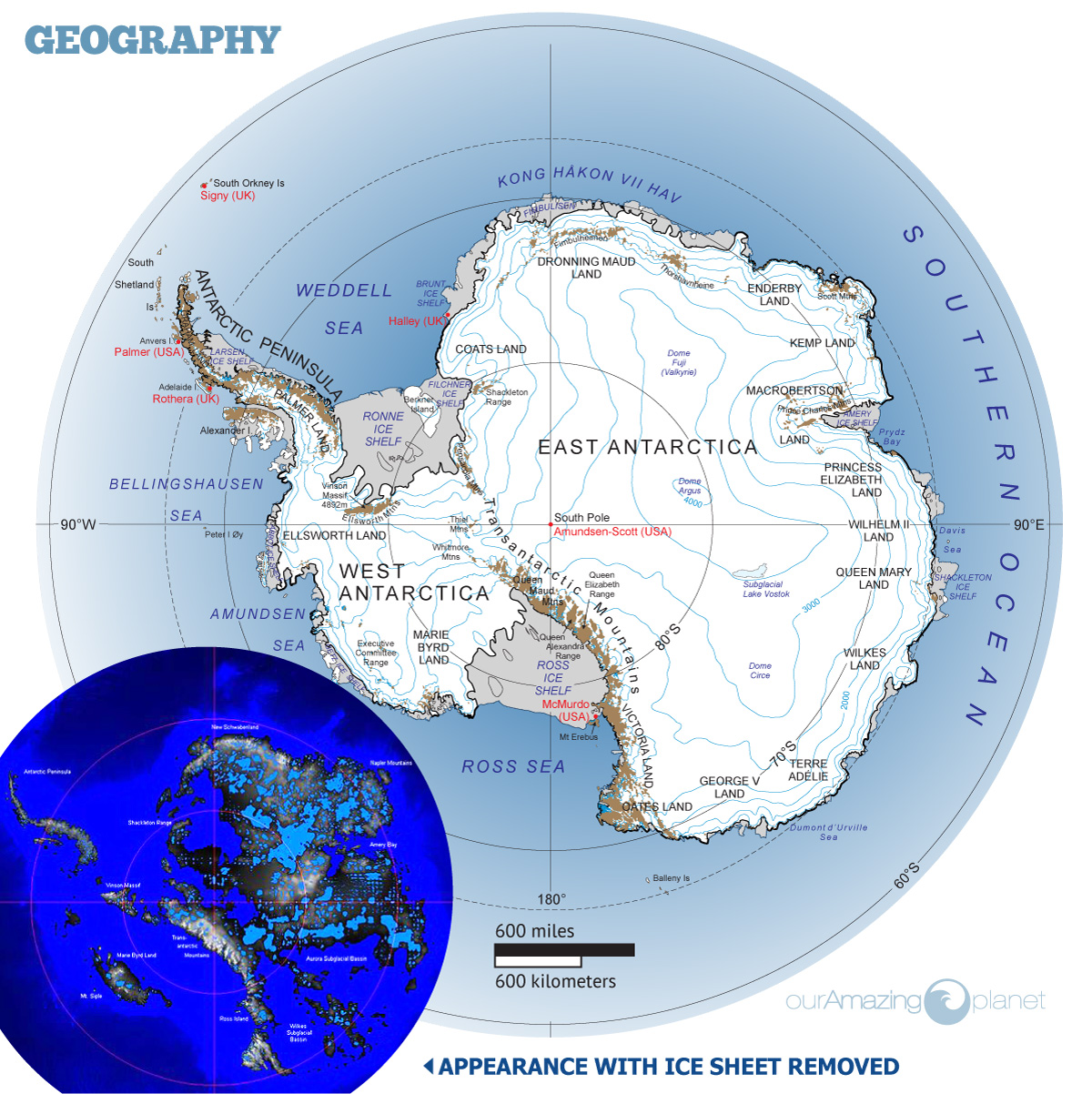
All but 0.32 percent of the continent is covered by the Antarctic Ice Sheet, which is the world's largest reservoir of fresh water (albeit in frozen form). The ice averages 1 mile thick (1.6 km).
The Transantarctic Mountains divide the continent into East and West sections. At 2,175 miles long (3,500 km), the Transantarctic range is one of the longest mountain ranges on Earth.
Population: Zero
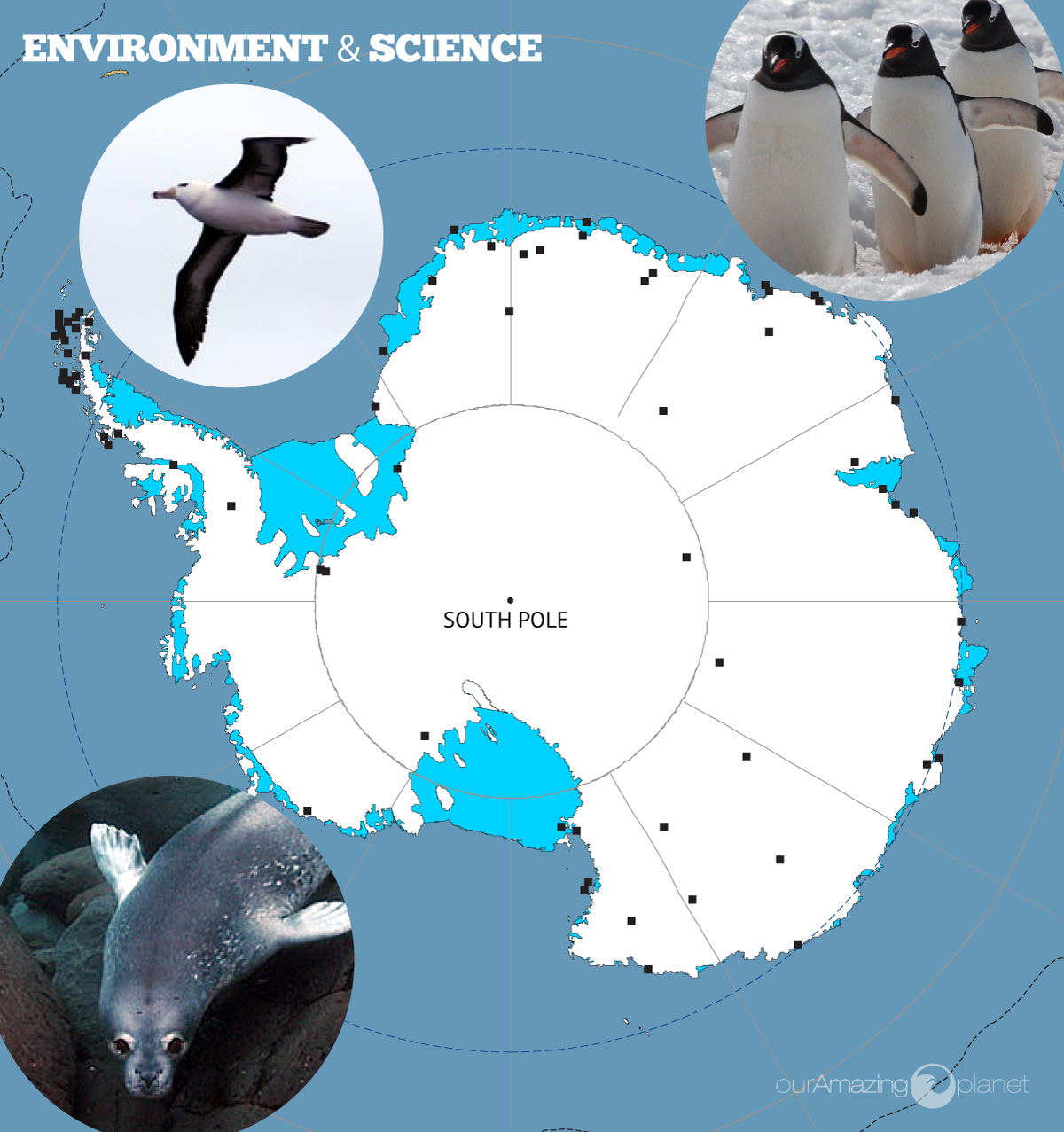
Squares on the map indicate main Antarctic facilities operated by the national Antarctic programs in the Antarctic treaty area, 2009.
Antarctica is the coldest, windiest and driest of all the continents. The coldest temperature recorded in Antarctica was minus-128.6 degrees Fahrenheit (minus-89.2 degrees Celsius) at the Russian Vostok station in 1983.
Antarctica has no indigenous population. A number of research stations are scattered across the continent. At its peak, in the summer, the continent's population swells to nearly 4,000 people. In winter, that number drops to around 1,000.
Very few vertebrate-animal species live in Antarctica. Several types of penguins, petrels, seals and whales call the region home. Eight species of mite and three species of springtail (hexapods similar to insects) have been found. Mosses, lichens, algae and microorganisms exist there, resorting to a dormant state when conditions become too extreme.
Shifting Plates
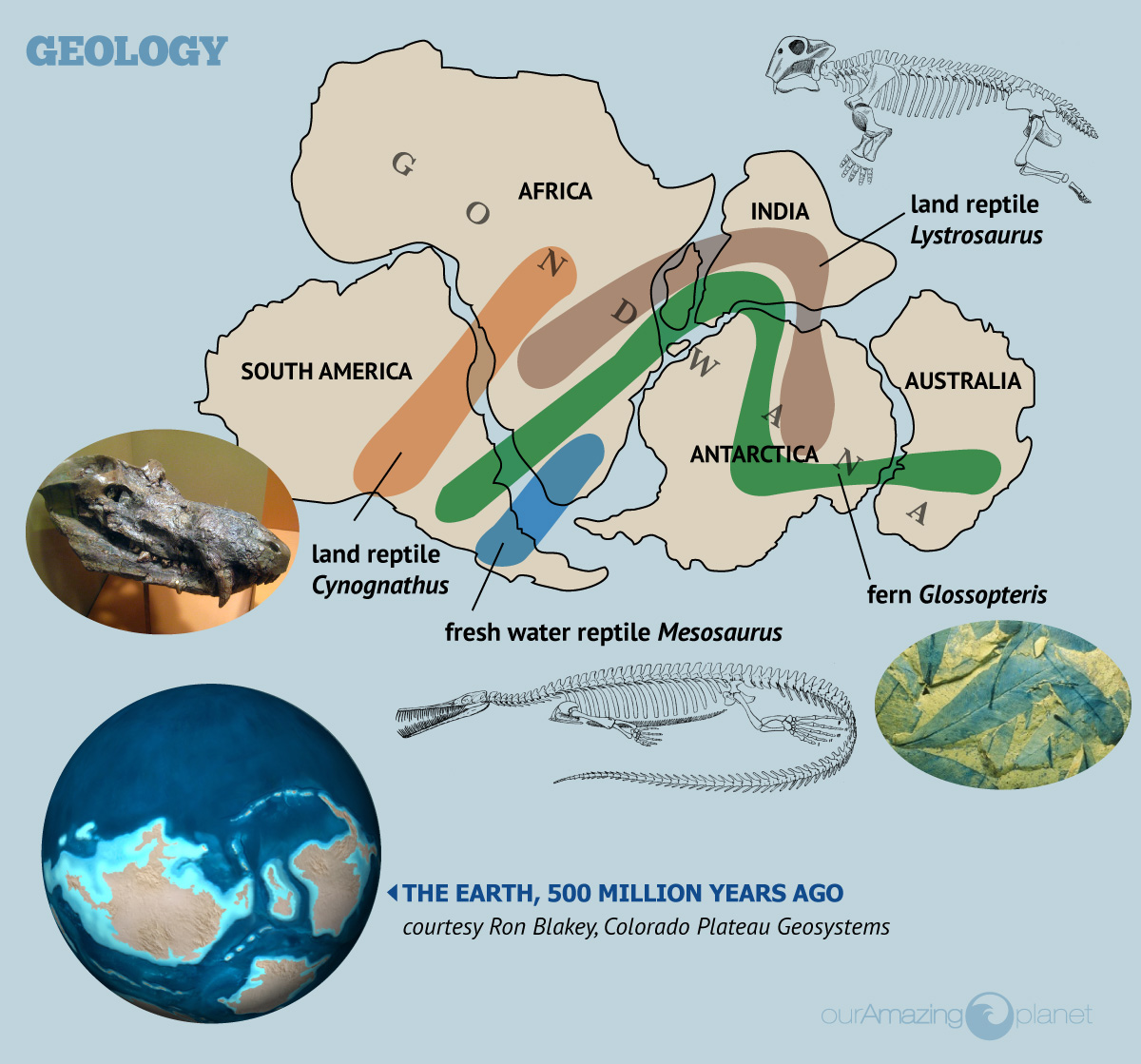
The fossil record of continents that are widely separated today show that once they were adjacent. Beginning about 500-million-years ago, the supercontinent Gondwana consisted of what is now Antarctica, South America, Africa, India and Australia. For a time, the land that now comprises East Antarctica was located on Earth's equator. The shifting plates of Earth's crust carried the continents apart and moved them to their current locations.
By the Mesozoic era, Gondwana had split up and the lands of Antarctica and Australia, still joined, had moved to the south polar region. The Earth as a whole had a warmer climate than it does today, so several species of dinosaur flourished in Antarctica from about 140-to-100-million-years ago.
Suspicions Confirmed

Early cartographers indicated a huge continent in the south polar region despite the fact that no traveler had ever described such lands. For 2,000 years philosophers had assumed the existence of this "Terra Australis" (Southern Land) in order to preserve the symmetry of the Earth's land masses.
By the 18th century the concept of Terra Australis was abandoned because no such southern land mass had been found. The name "Australis" was applied to what is now called Australia. In 1820 the first confirmed sighting of Antarctica was made, and by 20 years later it was established that Antarctica comprised an entire continent and not just a group of islands.
The first explorers to reach the South Pole were led by the Norwegian Roald Amundsen, beating a competing British party led by Robert Scott. Both parties crossed the Ross Ice Shelf to approach the pole. Amundsen's party traveled nearly 800 miles (1285 km), reaching the pole on Dec. 14, 1911. The party returned along the same route with no casualties. The competing party led by Robert Scott traveled a route 60 miles (96 km) longer, reaching the pole 34 days after Amundsen. Scott and his entire party perished on the return trip.
Territorial Claims
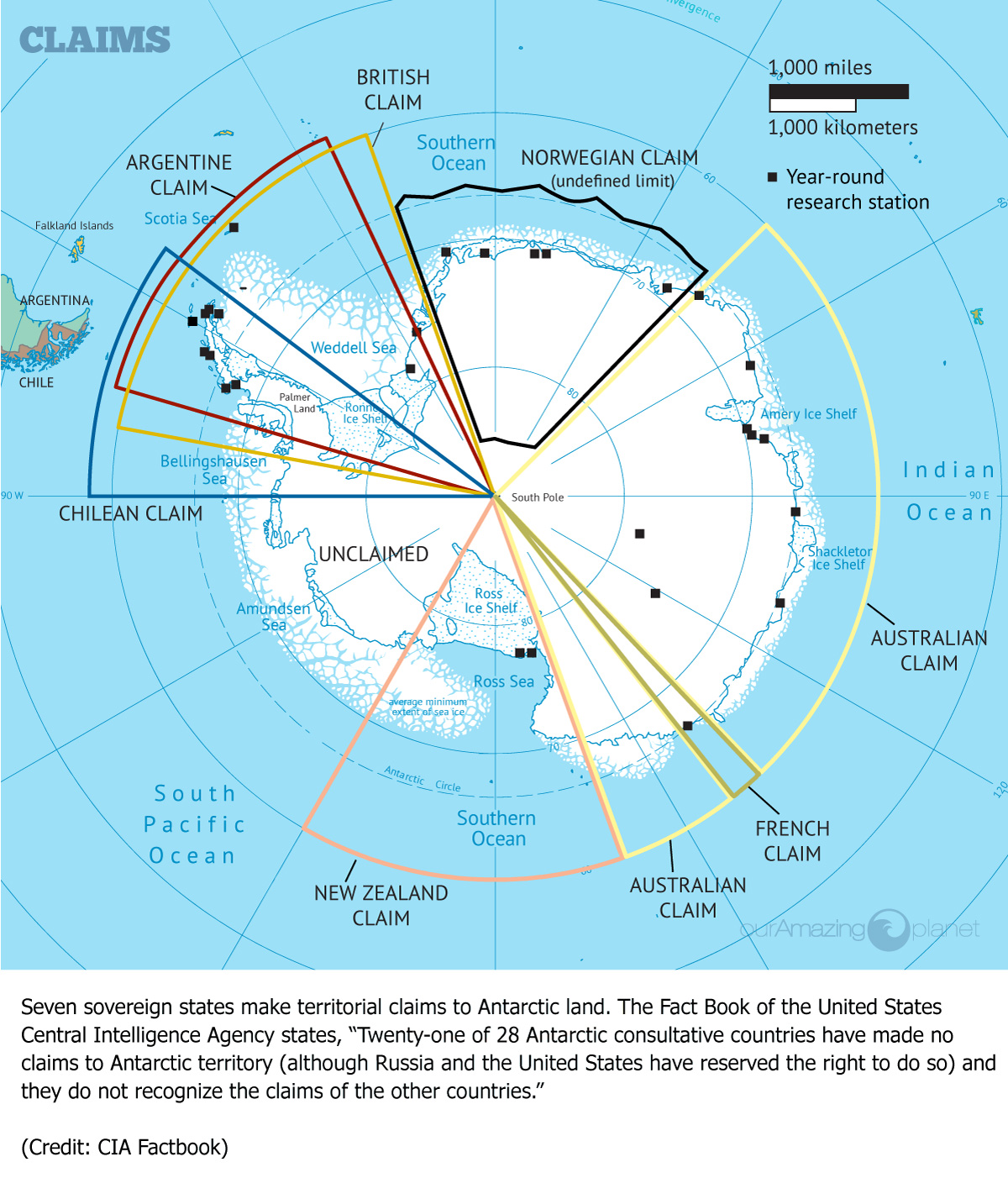
Seven sovereign states make territorial claims to Antarctic land. The Fact Book of the United States Central Intelligence Agency states, "Twenty-one of 28 Antarctic consultative countries have made no claims to Antarctic territory (although Russia and the United States have reserved the right to do so) and they do not recognize the claims of the other countries."
Sign up for the Live Science daily newsletter now
Get the world’s most fascinating discoveries delivered straight to your inbox.











